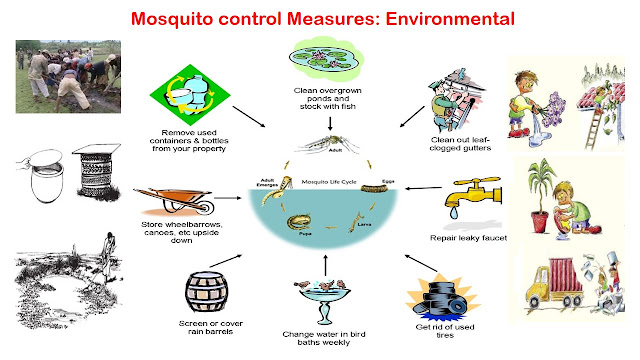Spotters in "Environment and Health: Mosquito control Measures" for CFM & MPH students

The integrated approach of mosquito control: This is an approach that avoids the excessive use of any one method (e.g insecticides) but tries to combine one or more methods with a view to obtain maximum results with minimum inputs and also to prevent environmental pollution with toxic chemicals & development of insecticide resistance. The various methods of mosquito control are as follows: 1. Anti- Larval Measures: (a) Environmental Control: Important Points: Source reduction : Mainly the elimination of mosquito breeding places by minor engineering methods such as Filling- of cesspools & open ditches and arrangement for adequate collection, removal, and disposal of sewage & wastewater. Leveling & getting rid of water-holding containers such as discarded tins, empty pots, broken bottles, coconut shells, etc. Drainage of breeding places, and Water management (e.g intermittent irrigation) & removal of aquatic plants or destruction by herbicides. Rendering th...



